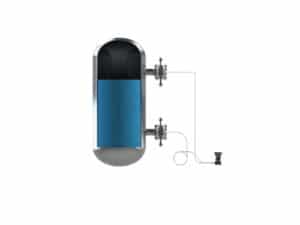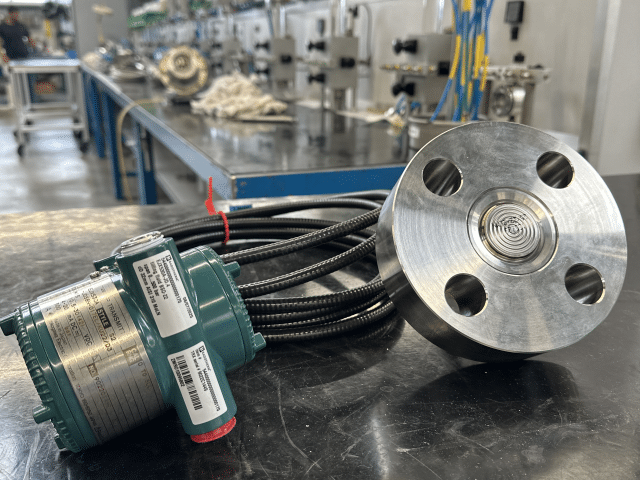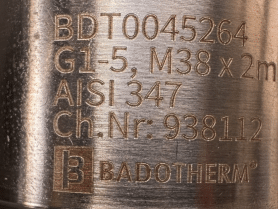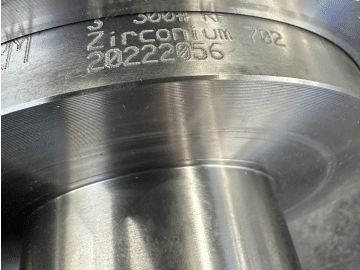Today we will focus on Style #2. With this measurement style the differential pressure transmitter is placed below the lowest nozzle.

This mounting style allows for a full vacuum process pressure without the risk of damaging the pressure transmitter, due to the liquid column providing at least the minimum pressure a pressure transmitter can handle, often around 35 mbara. This configuration means that capillaries need to be longer. This measurement style is often recommended in combination with a full welded construction.
Pro:
* This transmitter is protected against full vacuum without the risk of damaging the pressure transmitter.
* Transmitter might be easier accessible
Con:
* It requires longer capillaries, thus creating a larger ambient temperature effect.
* Longer capillaries have a higher cost.
* Longer capillaries are more difficult to handle
* Space restrictions below the lowest nozzle don’t allow for mounting below this point.
If this is the ideal mounting style for your situation, depends on several factors such as requirement for ease of installation, accessibility of the instrument: reading of local display and maintenance or obstacles that do not allow to place the instrument elsewhere.
Not taken all the diaphragm seal systems into account correctly, may result in this case that the measurement could fail. Hence proper engineering and checking of this situation is ideal for your situation is essential. With the use of our BaseCal tool, we can easily check this for you.
For more information the different measurement and installation styles go to: Measurement & Installation styles – Badotherm



